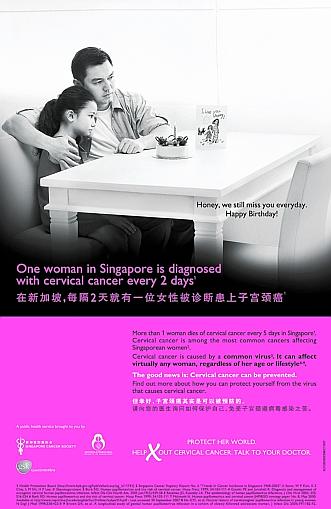Smoke gets in your eyes 2
angry doc had a bit of a deja vu when he read this news article this morning:
Warning labels disgusting, but effective
Alicia Wong
FEAR is a factor when it comes to discouraging smoking in Singapore — in more ways than one.
While lung cancer is the most feared condition here, more Singaporeans feel “extremely fearful” when they look at health warning images on cigarette packs.
Almost 40 per cent here felt that way about graphic labels, much higher than the 26 per cent in Scotland, according to a survey of attitudes and awareness toward smoking in both countries.
In this instance, the images were from Australia, so both sets of respondents, less than a quarter of whom in Singapore were current or ex-smokers, were not familiar with them.
About 40 per cent of the 115 respondents here, adults at outpatient clinics in Alexandra Hospital (AH), also gave a score of 10 for disgust. In comparison, 20 per cent felt no fear and 12 per cent felt no disgust – which was worrying enough for housewife Grace Seah, 34. “It’s unbelievable they don’t see that they’re not immune to the consequences of smoking. But maybe those who felt no fear at all are non-smokers, so they are naturally not concerned,” she told Today.
However, the bottom line was that more than half indicated that these labels, which also carry information on various diseases, were effective in discouraging the habit.
And non-smoker Vincent Loh thinks the results are encouraging. “Every smoker that quits or every smoker-to-be that is deterred because of the images is great. At least there are more who are disgusted than those who are unaffected,” said the 29-year-old engineer.
AH registrar of ophthalmology and visual sciences, Dr Srinivasan Sanjay, said: “Graphic warnings de-glamourise cigarette packs and let people know what they get in return from smoking.”
The link between smoking and glamorous lifestyles, through the tobacco industry’s marketing campaign, is putting half a billion young Asians at risk of diseases associated with nicotine, the World Health Organisation (WHO) said on Friday.
On the eve of the WHO-designated World No Tobacco Day, Asia-Pacific director Shigeru Omi called on policymakers to support a total ban on tobacco advertising, sponsorship and promotion as stipulated in the WHO Framework Convention on Tobacco Control, a global tobacco control agreement.
The WHO added that the tobacco industry’s current focus on young females is a challenge that has to be dealt with urgently.
In Singapore, awareness levels on smoking can be increased, according to the survey, which found that a “strikingly low level” of 37 per cent of Singaporeans knew that smoking causes blindness. So, while 32 per cent feared lung cancer the most, only 17 per cent cited blindness.
The Health Promotion Board :“Is constantly monitoring the evidence on the causal relation between smoking and disease and we regularly revise the health warnings by updating the warnings with other less commonly known diseases like neck cancer and gangrene, to ensure that the warnings remain effective”, chief executive officer Lam Pin Woon told Today.
He promised that HPB’s smoking control programme would highlight “in the coming years, other lesser-known diseases, such as smoking and its impact on vision”.
We've actually discussed this topic two years ago, but since it has made the news again...
It is not surprising that disgusting pictures cause, well, disgust in people who view them. However, angry doc would not hasten to call an anti-tobacco programme that succeeds in disgusting some people sitting at an outpatient clinic 'effective', even if "more than half [those surveyed] indicated that these labels... were effective in discouraging the habit", especially when it is not clear if they themselves were indeed smokers.
With many things in healthcare, it is important to begin with the end in mind, and keep the end in mind.
The aim of an anti-tobacco campaign must be in the end to reduce the mortality and morbidity that is caused by tobacco use. Since there is no way to determine the correlation between the number of people who are disgusted by disgusting pictures and mortality and morbidity statistics, angry doc thinks that the survey was at best a useless piece of information, and at worst a piece of misinformation.
As angry doc has mentioned in his previous post, he believes that better surrogates for the information we want are the smoking prevelance in the population and the statistics for tobacco products inmported and sold in the country.
angry doc wonders why the HPB seems to be more concerned with the amount of fear and disgust their campaign cause than with the number of lives they are saving.
Labels: in the news









